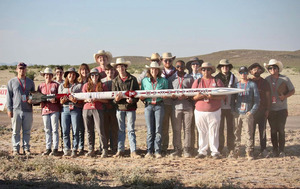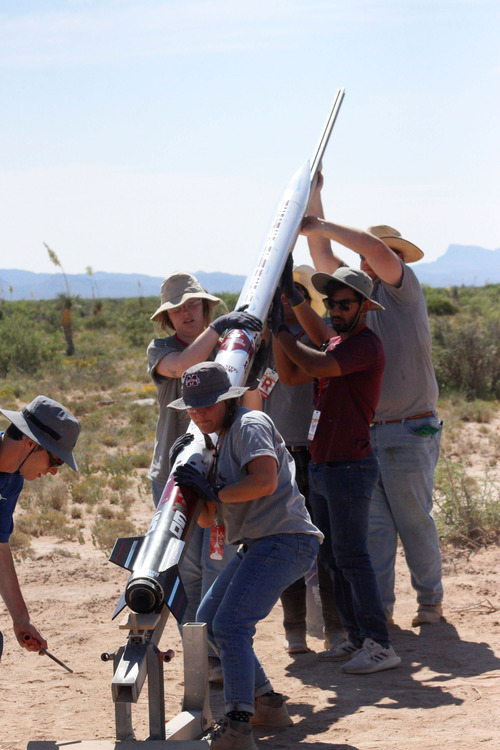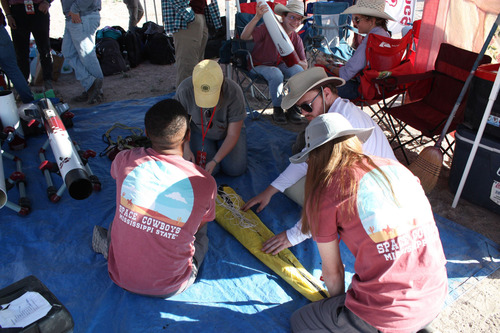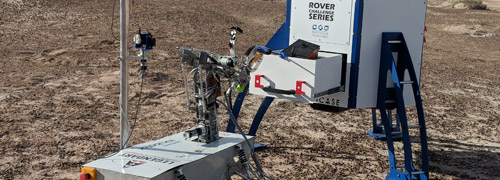
Spaceport America Cup is the world’s biggest rocket engineering competition for college and university students, held each June in New Mexico as a collaboration between Spaceport America and the Experimental Sounding Rocket Association (ESRA).
As you’ve seen earlier on our channels, Protocase sponsored the 2023 event for the first time ever, including providing an in-kind sponsorship for manufactured parts to all registered teams.
One of the teams that took advantage of the Protocase sponsorship were the Space Cowboys, an undergraduate design team from Mississippi State University (MSU). The MSU Space Cowboys is made up of around 100 members, with Hayes Richey leading the squad as its President. Other office bearers include Wallace St. Paul as Project Manager and Lillian Stewart as the Chief Engineer.
Teamwork makes the dream work
“It’s not rocket science..” is a phrase commonly used to describe tasks that are not difficult to undertake. But here, with the Space Cowboys designing, building, and launching high-powdered rockets, we’re on the opposite end of the spectrum – this is literally rocket science!
In such situations, wherein you’re building complex structures, it’s important to be inventive and imaginative while working well together as a team. To achieve this, the Space Cowboys have five sub-teams – structures, payloads, simulations, propulsion, and BEANS (Business and Expense Administrative Networking Subteam).
“While each sub-team operates independently, their collaboration is essential,” says Richey, the Space Cowboys President. “In essence, while each sub-team has a specialized function, they come together to produce a cohesive, functioning rocket, ensuring the team's success at the Spaceport America Cup each year.”
Spaceport America Cup has multiple categories for teams to compete within. The Space Cowboys participated in the 30,000 ft altitude category with a commercial off-the-shelf (COTS) solids motor.
“Our design process starts in the Fall semester with our simulations sub-team and chief engineer,” explains Stewart, the Chief Engineer. “This sub-team designs the rocket using Open Rocket, SolidWorks, ANSYS, AeroFinSim, and other software. After the initial design of the rocket is released, the structures sub-team and payload sub-team begin the hands-on manufacturing and integration of the rocket design.”
The Spearhead rocket

The Space Cowboys christened the rocket built for this year’s Spaceport America Cup as Spearhead. It is a flight vehicle that composes of four primary subsystems – propulsion, aerostructures, recovery, and payloads.
“A fully integrated assembly of the rocket from forward to aft is comprised of the nosecone, payload bay, main recovery bay, avionics coupler, drogue recovery bay, and motor tube with fins, standing at approximately 13ft tall with a 5.2in outer diameter,” explains Stewart.
“The nosecone assembly is fixed to the payload bay. Nosecone contains two payload experiments: the SPEAR pitot tube system and the COTS GPS. The remaining payload experiments are mounted on the payload sled that slides into the forward chamber of the payload and main recovery bay tube.”
The two primary sections include the recovery bay tube and the motor tube, separated by a bulkhead. The avionics coupler chamber, which is a center focal, is contained between a removable bulkhead on the forward end and a fixed bulkhead on the aft end. This, in turn, creates the space that houses the redundant flight computer system.
The Space Cowboys chose a modular design for Spearhead, which allowed for streamlined assembly procedures while also easing its transportation.
Working with Protocase
The Space Cowboys first came across Protocase on HeroX, a network that connects innovators to help solve problems together (and the platform that ESRA uses to communicate with teams competing at the Spaceport America Cup).
The student team from Mississippi had a thrust ring manufactured by Protocase CNC Machining. It was an integral part of the rocket assembly.
“The motor assembly of the rocket is completed in multiple stages,” elaborates Stewart. “One of the primary stages in this assembly is the aft retention that is required to hold the motor in place. The thrust ring was created in collaboration with Protocase to aid in this assembly process.”
The MSU students were thrilled with the service they received from Protocase, labelling the manufacturer as “one of the best sponsors” they have worked with. They were especially impressed with timely responses and assistance from their account manager Jonathan MacKinnon.
“The sponsorship and support from Protocase were essential to us,” adds Stewart. “Although the Space Cowboys is an established club within the university, seeking funds and sponsorship opportunities is something that the team aggressively seeks to be able to fund missions. The team is excited to continue this partnership!”
Impressive performance

The Space Cowboys completed the 30,000 ft COTS category at the Spaceport America Cup with an admirable fifth-place finish.
“Every member poured countless hours into ensuring our rocket performed to the best of its capabilities,” says Richey. “The feeling of seeing our collective effort materialize into such a significant result was incredibly rewarding.”
“At the same time, it was humbling because we were up against some of the most talented and dedicated teams from around the world. It’s a strong motivator for us to keep pushing boundaries and striving for even greater heights in future competitions.”
Project Manager St. Paul also has some advice for future students who aim to partake in the Spaceport America Cup. He recommends participants start working on their rockets as early as they can, adding that the groundwork for the Space Cowboys’ launch vehicle for next year’s competition begins almost immediately after the end of the previous edition.
